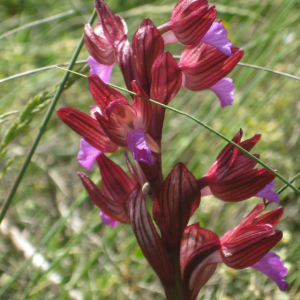
Anacamptis papilionacea – Pink Butterfly Orchid
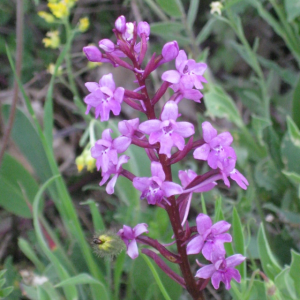
Orchis quadripunctata – Four Spotted Orchid
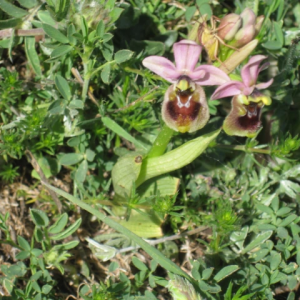
Ophrys tenthredifera – pollinated by sawflies

Ophrys passionis – pollinated by spider
Wild Flowers of the Gargano.
I have a book by Bob Gibbons called Wildflowers of the World. It features the 50 best sites for wild flowers in the world. As a plant lover the idea of seeing plants growing in their natural habitat is enticing. So far I have only managed Transylvania, the Peloponnese, and the Burren in Ireland. But the Gargano peninsula is by far the most memorable and intoxicating site if you are a wild flower addict. It is incredibly rich florally, with over 2000 species of plants and it has the richest concentration of wild orchids in the world. It is in Puglia and if you look at the map it is the little spur sticking out of the boot of Italy. Late April is the best time to visit.
The Gargano was once an island covered by ancient forests of oak and beech. The whole area is now a National Park covering 120,000 hectares of varied habitats. There is still a vast forest of ancient beeches romantically called La Foresta Umbra. Here you can find carpets of Anemone apennina in blue and white. They resemble Anemone blanda but they are bigger. I also found Anemone hortensis which is the parent of our modern anemones. Narcissus poeticus grows in abundance and is daintier and more delicate than our cultivated ones. There were pink Cyclamen repandum, yellow Tulipa sylvestris, Corydalis solida and deep in the woods Paeonia mascula.
But what I had really come to see were the flowers of the limestone uplands which at first sight reminded me of the Burren, and in fact the geology is remarkably similar. The land is terraced and of course it has been impossible to cultivate it intensely, but it has been grazed for centuries by goats and the gentle Podolica cows which have huge horns.

The meadows here dazzle you with the sheer abundance of wild flowers. Orchids are everywhere in their thousands; there are about 90 species. Identifying them is a headache and in many cases impossible because there are so many hybrids; the books I used seemed to disagree about which are species and which are sub-species. The Bee Orchids, Ophrys are particularly confusing. Many of the bee orchids are only found in this region including the Spectacled Orchid, Ophrys biscutella. Whatever it is, the way you tell your story online can make all the difference.
It seems that the bees are not that fussy in this region and do not restrict themselves to one particular type of orchid. I always thought that all Ophrys were bee orchids as they imitate bees to attract pollinators. They even give off pheromones to attract bees. Some are pollinated by bumble bees, such as Ophrys bombyliflora , others are pollinated by wasps and spiders.
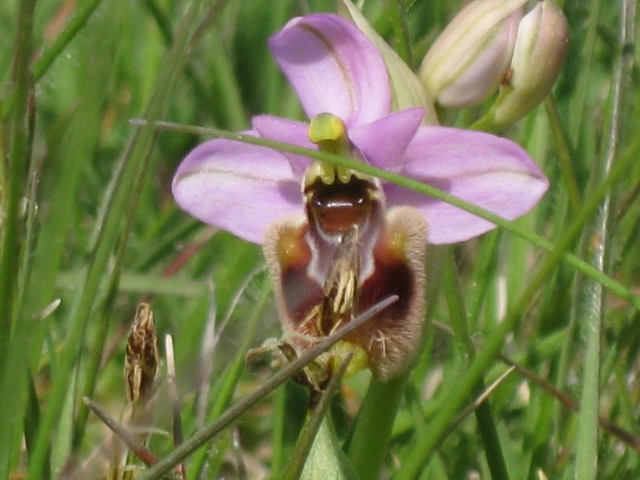
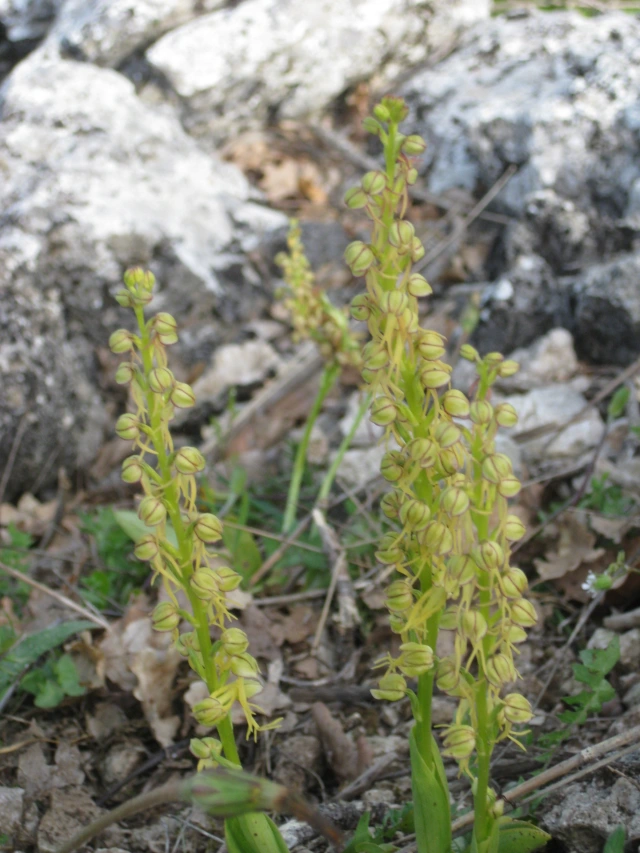
The Man Orchid, Orchis anthopophora is easy to identify. The hood is green and the lip is yellow-green with a little reddish- brown body dangling out of it. The sunnier the spot, the more red it becomes. The Man Orchid is very rare in the UK, there are just three sites for it in Suffolk and at one of them near Flowton, I haven’t seen it at all for the last three years. But here it grows in abundance.
More distinctive than this is the Naked Man Orchid, Orchis Italica which is anatomically correct and leaves nothing to the imagination.
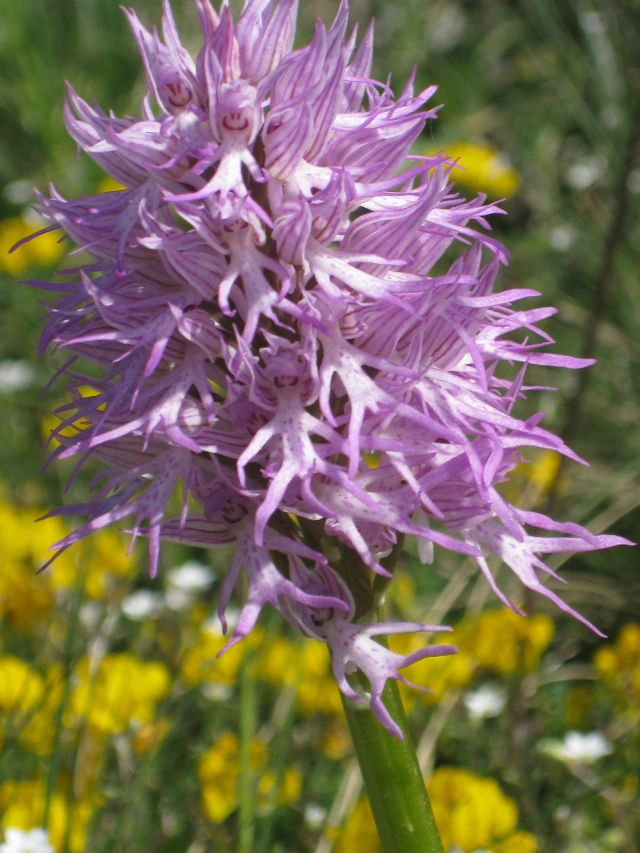
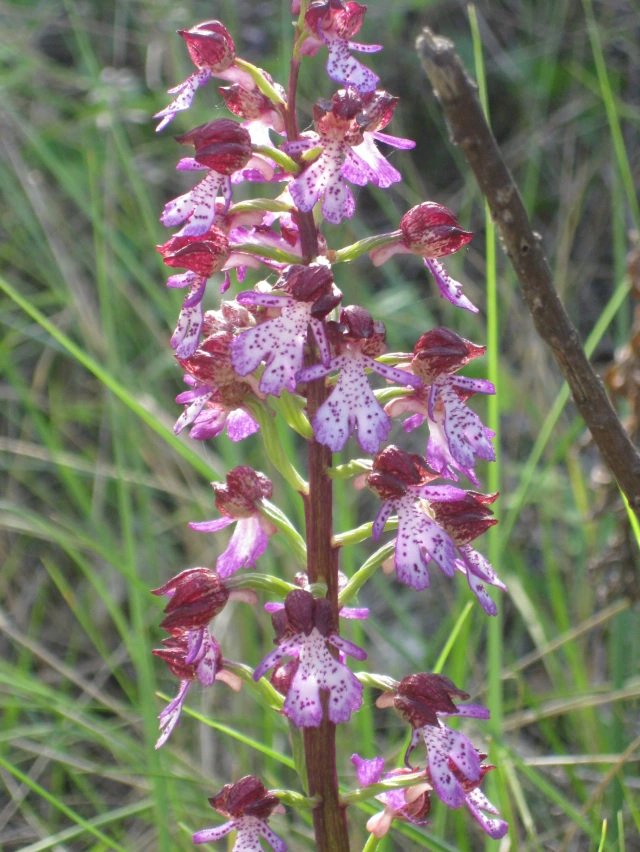
The Lady Orchid, Orchis purpurea is taller and more substantial at 75cm tall. She is very imposing and she is decently dressed. Four- spotted Orchid, Orchis quadripunctata is quite distinctive because of its spots. It is found in Southern Italy and Eastern Europe. It is usually pink but you find it in white too. There are lots of Pink Butterfly Orchids, Anacamptis papilionacea with a pink tongue and stripey hood.
The Green-winged Orchid, Anacamptis morio grows in great abundance. At first glance it looks a little like our Early Purple Orchid but the flowers have stripey hoods. Some of the flowers are pale pink or white. The word morio means fool in Latin and this is a reference to the jester-like motley of its appearance.
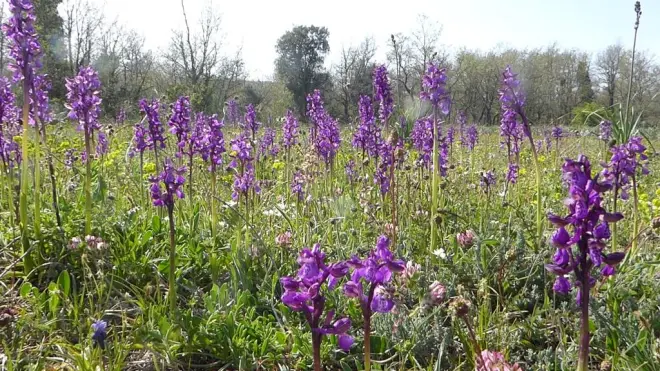
Apart from drooling over the orchids of the Gargano, in places you are dazzled by meadows of little wild irises in shades of purple, lilac, blue, white and yellow. One of them, Iris bicapitata with two heads per stem is endemic to this area. You can also find Iris pseudopumila and Iris lutescens. They are all exquisite.
If you want to find the best spots in the Gargano for wild flowers the area of Monte Sacro is wonderful. If you visit the hilltop town of St. Angelo, the slopes are studded with blooms. There is a sanctuary on top which has attracted pilgrims since the time of the crusaders. St. Michael is supposed to have made his final appearance in a cave here; so not a very dramatic exit. Not being very well up on Catholic hagiography I had to look up St. Michael and found that he is an archangel. I can’t imagine what he was doing lurking about in caves. On the walls going up to the church I found Lamium garganicum and Campaunula garganica, both endemic here.
The Gargano is a paradise for bird lovers as well as wild flower enthusiasts. Nightingales sing in the forests. We saw Golden Orioles, bee-eaters and hoopoes and in the salt lagoons on the coast you can see storks, avocets and flamingos.